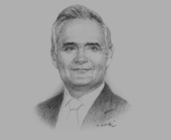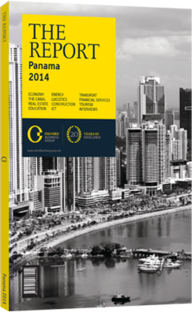OBG talks to Jorge Quijano, Administrator, Panama Canal Authority (ACP)

Interview: Jorge Quijano
To what extent will the global economic recovery and shifting trade patterns aid revenue forecasts?
JORGE QUIJANO: World maritime trade is expected to strengthen in the long term through the transportation of raw materials and hydrocarbons such as liquefied natural gas (LNG) and coal, originating from the Atlantic coast of North and South America, and headed to Asia and the west coast of South America. The canal expansion will consolidate most of these commercial routes since it will allow the transit of dry bulk carriers and tankers with double the current capacity.
Trade using container vessels from Asia to the east coast of the US will have a slower recovery time, which is linked to US economic conditions. However, greater trade between Asia and South America is likely, and this can directly benefit Panama transits. The ACP has forecast a moderate rise in tonnage transiting the canal, strengthening from 2015 onwards when the new expansion will be operational.
In what way are regional ports improving their facilities in anticipation of the canal’s expansion?
QUIJANO: Countries such as Colombia, Brazil, Chile and Peru have been spending on infrastructure to benefit from the expansion. One of the main concerns shipping lines have is whether ports on the east coast of the US will be ready to receive larger vessels, given that they are affected by draft restrictions, access channels and infrastructure limitations. However, port authorities are making efforts to get their expansion projects funded. And ports unable to handle bigger vessels will find themselves at a disadvantage, as they will depend on trans-shipment operations in Caribbean ports, including those on Panama’s Atlantic coast.
What opportunities will the expansion create for the logistics sector in the medium term?
QUIJANO: With the expansion, demand on the Pacific side is expected to reach 6m twenty-foot equivalent units (TEUs), and by 2020 we will need capacity for 8m.
The ACP is analysing the construction of an additional container port on the Pacific side that could handle around 5m TEUs. We are also studying a roll on-roll off facility and logistics park at the Pacific end by using land reclaimed with materials excavated and dredged in the expansion. Further, we are looking into a container-on-barge service across the canal, ship repairs for Post-Panamax vessels, or New Panamax as they will be called after the expansion, which will also add significant tonnage to the present lock system.
We are evaluating the establishment of an LNG bunkering station to service those vessels, which in six years will convert to LNG fuel. These new business endeavours seek to strengthen our logistics capacity, maintaining the competitiveness of the route and making the waterway more attractive as a one-stop gateway to multiple services.
How is the prospect of a rival canal being addressed?
QUIJANO: We have highly efficient port terminals on the Pacific and the Atlantic, an inter-oceanic railroad and two strategically located free-trade zones, all only 80 km apart. The region’s most important aviation centre is rapidly being integrated into this complex. Panama also offers a trans-isthmian oil pipeline and ample bunkering facilities. Any competitive analysis of the route must take into consideration not only transiting the canal, but also the current and future strengths of the maritime and logistics hub. Additionally, this hub is strengthened by sophisticated financial and commercial services and a stable economy that has used the US dollar for more than 100 years. Moreover, the Panama Canal can be expanded again by adding a fourth set of locks and further widening and deepening the existing channels, making more room available to even larger vessels when the demand is there.
There is a clear interest from the banking sector and multilaterals in the progress of the canal’s new projects to generate additional revenue for the canal, as well as to add value to our route and for Panama.
You have reached the limit of premium articles you can view for free.
Choose from the options below to purchase print or digital editions of our Reports. You can also purchase a website subscription giving you unlimited access to all of our Reports online for 12 months.
If you have already purchased this Report or have a website subscription, please login to continue.

